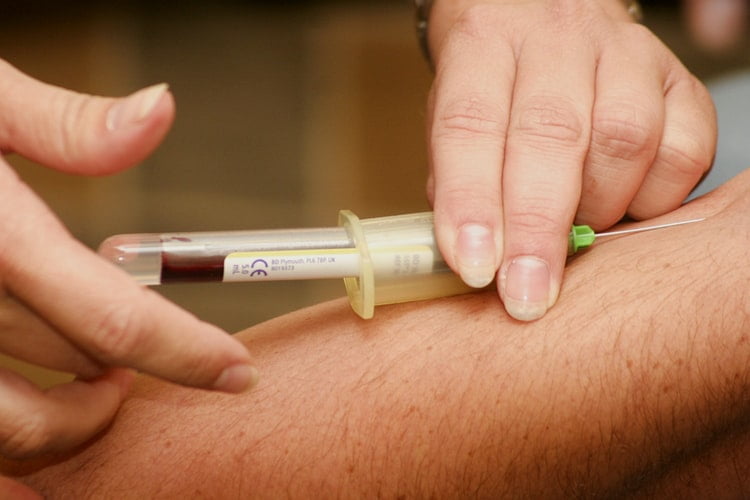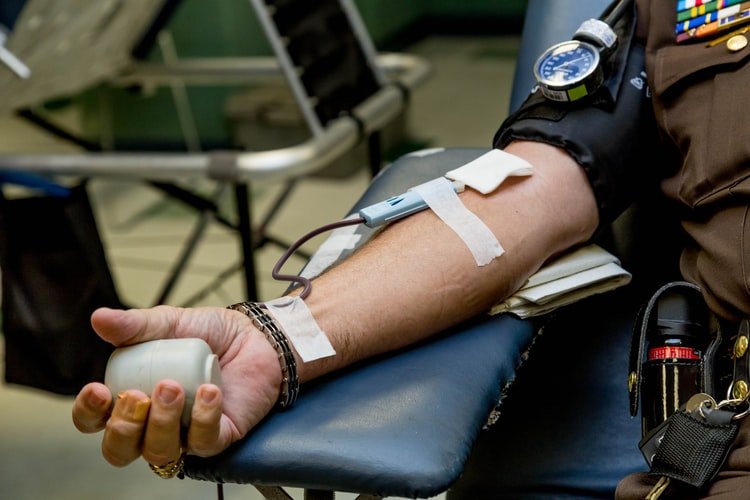Have you been thinking of checking out your community blood drive? Here are three good reasons why you should consider helping out by donating a pint of blood!
Most college campuses host blood drives at least once each semester.
Now, you’ve seen the flyers hung around town and your more philanthropic friends are nudging you to join them and sign up as a donor.
But how does donating a pint of blood help others?
And, do you walk away with any benefits of your own?
Read on to learn more about the blood donation process and why more than 6.8 million Americans donate blood every year!
How Blood Donations Help Patients In Need
Each regular blood donation consists of about 500 milliliters — or around one pint — of blood. Yet, those eight to ten minutes you spend hooked up to the needle and tube could save up to three lives.
After the blood drive ends, lab workers place whole blood donations into a massive centrifuge, which then spins rapidly for about 15 minutes.
This process separates each bag of blood into three components:
- Plasma
- Red blood cells
- Platelets
Your blood may then remain in storage for up to 42 days until a patient in need comes along. Or, if you’re among the 1% of the population with AB- blood, your donation might find its way into an IV within just a few days.
Here’s a closer look at how each component of blood helps patients in need:
Plasma
Plasma makes up more than half of your body’s blood content — about 55%. This watery blood component plays a crucial role in blood pressure regulation, fighting off infections, and circulating nutrients throughout the body.
It’s also crucial in the hospital setting when treating patients in need of electrolytes, blood volume, and clotting ability.
Plasma-only (or whole blood donations) can treat patients with:
- Severe blood loss
- Shock
- Clotting disorders
- Cancer (causing clotting difficulty)
- Burns
You can also donate pure plasma quite often since the body can replenish plasma stores in 48 hours. Most blood banks will accept plasma donations every 28 days.
Red Blood Cells
Red blood cells are rich in hemoglobin, responsible for carrying oxygen through the body and ridding the system of carbon dioxide. And, with 36,000+ transfusions in the U.S. each day, red blood cells are in high demand.
This component of blood is a life-saver for those with:
- Sickle-cell disease
- Anemia
- Severe blood loss
- Kidney failure
- Gastrointestinal bleeding
If your schedule is unpredictable, the Red Cross can also collect double the red blood cells from its “Power Red” donations. This process takes about a half-hour long and is ideal for those with A-, B-, or O blood types.
Platelets
Platelets are blood cells tasked with clumping together — or clotting — to stop internal and external bleeding. Each day, about 5,479 platelet transfusions occur on U.S. soil.
Donating these disk-shaped blood cells can help those with:
- Cancer (many treatments cause platelet counts to dip)
- Damaged bone marrow
- Severe bleeding
- Spleen disorders
- Anemia
- Autoimmune disorders
- Recent organ transplants
Cancer patients are most often the recipients of platelet donations, as radiation and chemotherapy tend to impact platelet counts. It’s also safe to donate platelets up to 24 times per year!
How Blood Donations Help You — The Donor
Free time can be hard to come by, especially if you’re a student, work a full-time job, or have little ones at home. From check-in to health history to donation, the entire blood donation process could take about 75 minutes.
But if you’re still weighing the pros and cons, think about the benefits blood donation may bring you:
You Might Receive Payment
The Red Cross does not offer financial incentives for those willing to donate whole blood. However, some blood banks may offer $20–$75 for each plasma donation, with even higher earnings for first-time donors.
In reality, you could earn an extra $300/month for about eight hours of your time and zero manual labor or thinking!
Donating Blood Can Benefit Your Health
Research shows that donating blood can also lower your risk of cancer, suffering a heart attack, or developing excess iron in the blood.
It Brings a Sense of Pride
Very few people donate blood for bragging rights. But perhaps the most significant benefit is knowing that your act of courage could potentially save the lives of three patients in need.
Donating Blood Is Simple!
The blood donation process takes about 75 minutes — or up to two hours if you’re donating pure plasma. But while a long process, it’s also a relatively simple one!
Here’s how it works:
- Find a blood drive or blood donation center in your area, at your workplace, or on your college campus.
- Complete the registration form, provide photo I.D., and make sure you’re eligible to donate blood.
- Answer a few questions about your recent health history and undergo basic testing (i.e., blood pressure).
- Sit still for about ten minutes as the blood donation process takes place; for platelets, this step will take closer to two hours!
- Refuel with cookies and juice in the refreshment area.
- Walk away knowing you did your good deed for the day.
The Red Cross will also accept whole blood donations about every 56 days (eight weeks). So if you enjoy giving back to your community somehow positively, sign up for a blood drive or make an appointment at a local blood bank every few months!
The risks are incredibly low. And the benefits could be life-saving.
Conclusion
Organizations like the Red Cross rely on selfless individuals to keep America’s blood supply steady. However, donating blood isn’t for everyone.
That’s especially true if you’re among the 20–30% of adults with a fear of needles. Or the 5% of people who get squeamish at the sight of blood.
But there are other ways to get involved!
Blood drives wouldn’t exist without volunteers to check donors in, run raffles, or serve juice and cookies.
So when the next blood drive rolls around, reach out to the organizer!
Author bio
Caitlin Sinclair is the Property Manager at Reveal Playa Vista with five years of property management experience and many more in Customer Service. She shares her passion for her community and looks forward to making Reveal Playa Vista the place to call home.
Read Also:






























